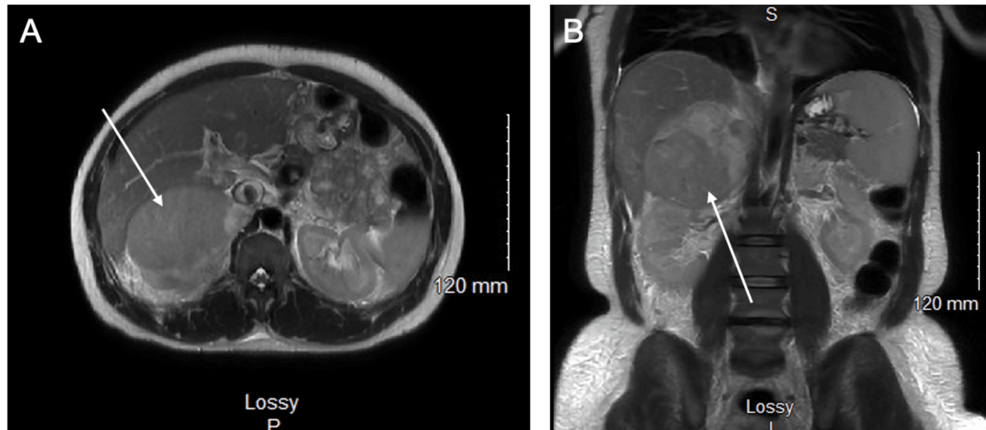- Kyrgyzstan President in Islamabad to hold talks with Pakistani leadership RADIO PAKISTAN
- Kyrgyzstan president arrives in Islamabad on 2-day maiden visit Dawn
- Kyrgyz president lands in Pakistan for two-day visit Geo News
- Kyrgyz President’s…
Blog
-
Kyrgyzstan President in Islamabad to hold talks with Pakistani leadership – RADIO PAKISTAN
-

Can Virat Kohli Break Sachin Tendulkar’s 100-Century Record? Check Total ODIs Left Including 2027 Cricket World Cup | News
Virat Kohli has struck back-to-back centuries in the ongoing ODI series against South Africa, and with one match still to go, he looks fully prepared for the challenges ahead. But the biggest question remains, can he reach Sachin Tendulkar’s…
Continue Reading
-

SFO issues new guidance to end ‘box ticking’ corporate compliance
Hinesh Shah and Melanie Ryan of Pinsent Masons were commenting after the SFO issued updated guidance clarifying its approach to evaluating businesses’ compliance programmes, particularly in light of the new failure to prevent fraud offence.
The guidance outlines six scenarios in which the SFO may need to evaluate an organisation’s compliance programme, including: when considering prosecutions; deferred prosecution agreements (DPAs); compliance terms and monitorships; potential defences to corporate offences, and sentencing considerations.
The biggest change follows the introduction of the new failure to prevent fraud offence, which was introduced by the Economic Crime and Corporate Transparency Act 2023 (ECCTA) and came into effect in September 2025.
Under this new offence, a large organisation will be liable for economic crimes committed by an ‘associated person’, which includes directors, employees and agents of the organisation, who act for the benefit of the business or for the benefit of another associated person of the organisation. A ‘large organisation’ is one which meets two of three criteria: having a turnover of more than £36 million; a balance sheet total of more than £18m; and having more than 250 employees. Penalties include unlimited fines for businesses and separate criminal convictions for any individuals involved in committing the offence.
The SFO says an organisation may have a defence “if, at the time of the offence, they had reasonable procedures in place to prevent fraud” or if the organisation can demonstrate that “it was not reasonable in the circumstance” to expect it to have any procedures in place. However, it reiterates that the burden of proof to prove this line of defence falls to the organisation itself.
Shah, a forensic accountant at Pinsent Masons, said the updated guidance would send a strong signal to businesses to get their compliance procedures in order. “The refreshed SFO guidance reinforces the importance of practical compliance measures,” he said. “Organisations must go beyond having policies on paper and demonstrate real-world effectiveness, particularly in light of the new failure-to-prevent fraud offence under ECCTA. This means investing resources, embedding controls, ongoing monitoring, and effecting cultural change to mitigate risk and satisfy regulatory expectations.”
Although the SFO acknowledges that many businesses already have “some level” of compliance in place, it says policies alone are insufficient and that compliance should entail developing and implementing anti-fraud and anti-bribery cultures, not tick-box exercises. It says that evaluation will be based on an organisation’s individual circumstances, not a one-size-fits-all model, and expects the revamped guidance to help determine how businesses’ “policies and procedures translate into conduct on the ground.”
The updated guidance follows the publication of joint guidance on corporate prosecution issued by the SFO together with the Crown Prosecution Service in August 2025 and the SFO’s guidance on corporate cooperation and enforcement in relation to corporate criminal offending in April 2025. Separately, the Home Office also published its own statutory guidance in November 2024 that highlighted procedures that businesses can implement to prevent “associated persons from committing fraud” (PDF 46 pages / 516KB).
Ryan, an investigations specialist at Pinsent Masons, said businesses should pay close attention to the new evaluation criteria to minimise the risk of failing to comply. “The updated guidance does not change the law – it clarifies how the SFO will evaluate compliance programmes and apply public interest factors,” she said. “Companies should focus on evidencing adequate or reasonable procedures, as these will be critical in defending enforcement actions and influencing decisions on deferred prosecution agreements.”
The guidance applies to businesses operating across England, Northern Ireland and Wales. The SFO’s jurisdiction does not extend to Scotland, which operates its own self-reporting regime under the Crown Office and Procurator Fiscal Service (the COPFS).
Continue Reading
-

Know schedule and watch live streaming in India
Paris 2024 medallist Manu Bhaker and freshly-crowned world champion Samrat Rana are part of a strong 15-member shooting squad who will represent India at the ISSF World Cup Final 2025, scheduled to start in Doha, Qatar, from Thursday.
The Doha…
Continue Reading
-
Focus: Hedge funds double down using near-record leverage in quest to boost returns – Reuters
- Focus: Hedge funds double down using near-record leverage in quest to boost returns Reuters
- Bond termites, not vigilantes, are the big risk Reuters
- Bank of England sounds alarm as foreign hedge funds snap up UK debt – latest updates The Telegraph
- The Hedge-Fund ‘Basis Trade’ Is Booming in the U.K.—And the Bank of England Is Wary The Wall Street Journal
- BOE Warns of Growing Gilt Risks From Hedge Funds’ Basis Trades Bloomberg.com
Continue Reading
-

Field Marshal Munir expresses satisfaction with ‘robust defence collaboration’ in meeting with Saudi military commander – Pakistan
Chief of the Army (COAS) Staff Field Marshal Asim Munir expressed satisfaction on Wednesday with the “robust defence collaboration” underway between Pakistan and Saudi Arabia.
The two countries have long shared a multifaceted relationship…
Continue Reading
-
Fresh round of Afghanistan-Pakistan talks fails to reach a deal, officials say – Reuters
- Fresh round of Afghanistan-Pakistan talks fails to reach a deal, officials say Reuters
- Islamabad-Kabul impasse persists in Riyadh Dawn
- Fresh talks between Pak, Afghan fail without breakthrough: Media report ThePrint
- Pakistan & Taliban Agree To…
Continue Reading
-
Developing Countries’ Debt Outflows Hit 50-Year High During 2022-2024
World Bank Was Largest Provider of Net New Financing to 78 Most Vulnerable Countries
WASHINGTON, December 3, 2025—Developing countries paid out $741 billion more in principal and interest on their external debt than they received in new financing between 2022 and 2024—the largest gap in at least 50 years, according to the World Bank’s latest International Debt Report released today.
Still, most countries gained some breathing room on their debt last year as interest rates peaked and bond markets opened up again. That enabled many countries to stave off the risk of default by restructuring their debt. In all, developing countries restructured $90 billion in external debt in 2024, more than any time since 2010. Bond investors, meanwhile, pumped in $80 billion more in new financing than they received in principal repayments and interest. This helped several complete multi-billion-dollar bond issuances. However, the funds came at a high price—interest rates hovered around 10%, about double those before 2020.
“Global financial conditions might be improving, but developing countries should not deceive themselves: they are not out of danger,” said Indermit Gill, the World Bank Group’s Chief Economist and Senior Vice President for Development Economics. “Their debt build-up is continuing, sometimes in new and pernicious ways. Policymakers everywhere should make the most of the breathing room that exists today to put their fiscal houses in order—instead of rushing back into external debt markets.”
In 2024, the combined external debt of low- and middle-income countries hit an all-time high of $8.9 trillion—with a record $1.2 trillion owed by the 78 mainly low-income countries eligible to borrow from the World Bank’s International Development Association (IDA), the new report shows. The average interest rate that developing economies will pay to their official creditors on their newly contracted public debt in 2024 stood at a 24-year high. The average paid to private creditors was at a 17-year high.
In all, these nations paid a record $415 billion in interest alone—resources that could have gone to schooling, primary healthcare, and essential infrastructure. For instance, an average of one out of every two people in the most highly indebted countries was unable to afford the minimum daily diet necessary for long-term health.
Low-cost financing became harder to obtain, except from multilateral development banks such as the World Bank, which was the single-largest provider of financing for IDA-eligible countries. In 2024, the World Bank provided a record $18.3 billion more in new financing to IDA-eligible countries than it received in principal and interest payments. It also provided a record $7.5 billion in grants to these countries.
Official bilateral creditors—mainly governments and government-related entities—retreated after participating in a wave of restructurings that cut the long-term external debt of some countries by as much as 70 percent. In 2024, bilateral creditors took in $8.8 billion more in principal and interest than they disbursed in new financing for developing countries. With options for low-cost financing dwindling, many developing countries turned to domestic creditors—local commercial banks and financial institutions. Of 86 countries for which domestic-debt data are available, more than half saw their domestic government debt grow faster than external government debt.
“The rising tendency of many developing countries to tap domestic sources for their financing needs reflects an important policy accomplishment,” said Haishan Fu, the World Bank Group’s Chief Statistician and Director of its Development Data Group. “It shows their local capital markets are evolving. But heavy domestic borrowing can spur domestic banks to load up on government bonds when they should be lending to the local private sector. Domestic debt also comes with shorter maturities, which can raise the cost of refinancing. Governments should be careful not to overdo it.”
The report also offers troubling new insights into how high debt levels have affected the daily lives of people in developing countries. It finds that among the 22 most highly indebted countries—those whose external debt stock exceeds 200% of export revenue—an average of 56% of the population is unable to afford the minimum daily diet necessary for long-term health. Eighteen of these countries are IDA-eligible countries, where nearly two-thirds of the population cannot afford the necessary diet.
Continue Reading
-
Afghan Taliban minister says US shooting has nothing to do with his people or government – Reuters
- Afghan Taliban minister says US shooting has nothing to do with his people or government Reuters
- Afghan Taliban minister says US shooting has nothing to do with his people or govt Dawn
- Suspect in National Guard attack struggled with ‘dark…
Continue Reading
